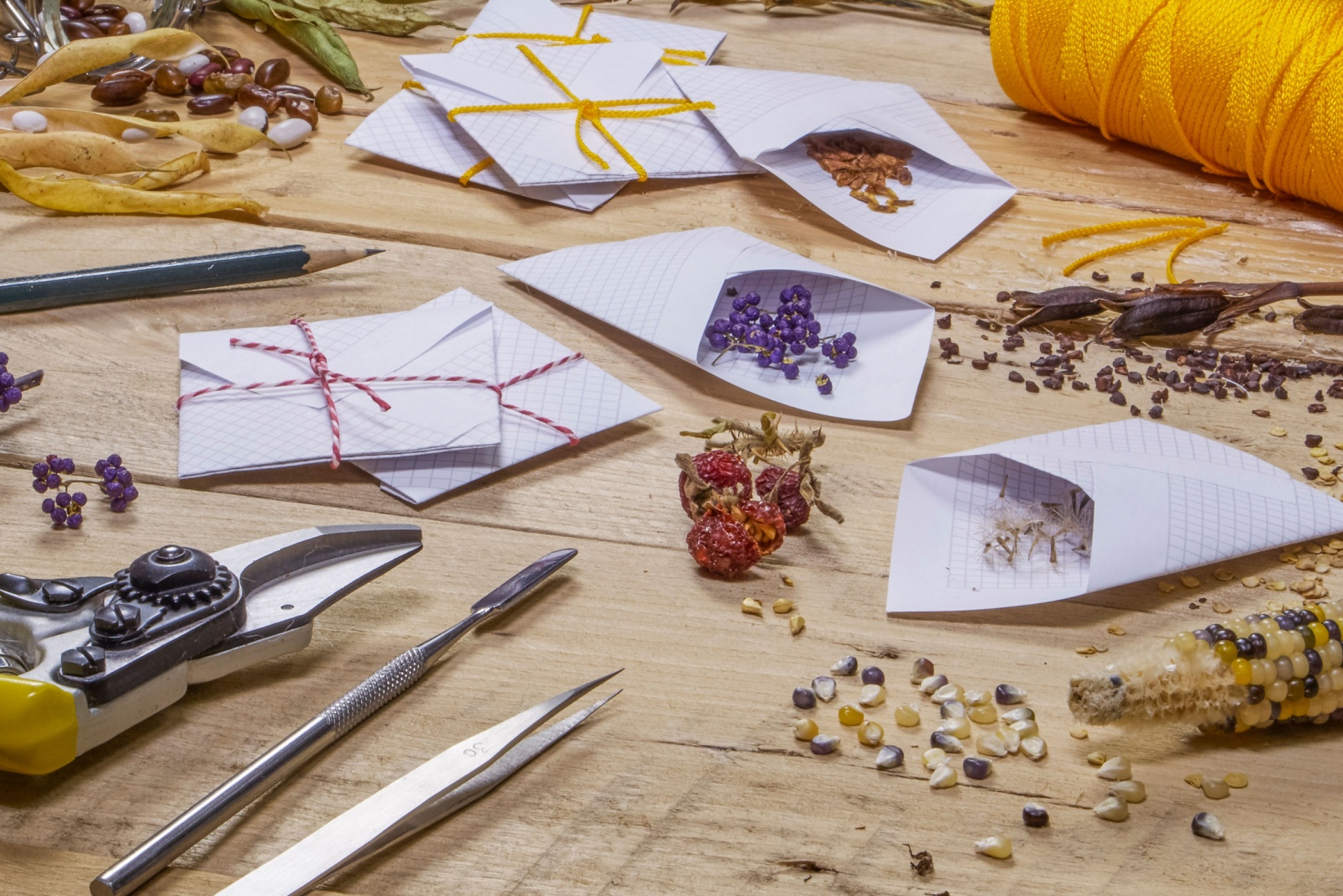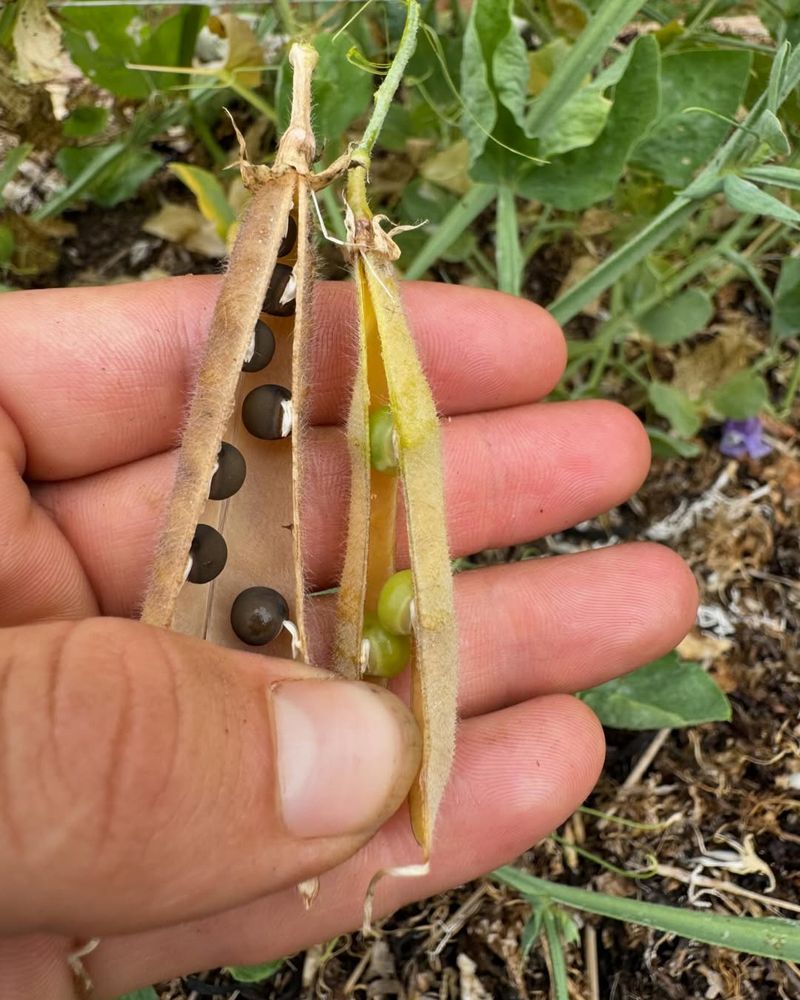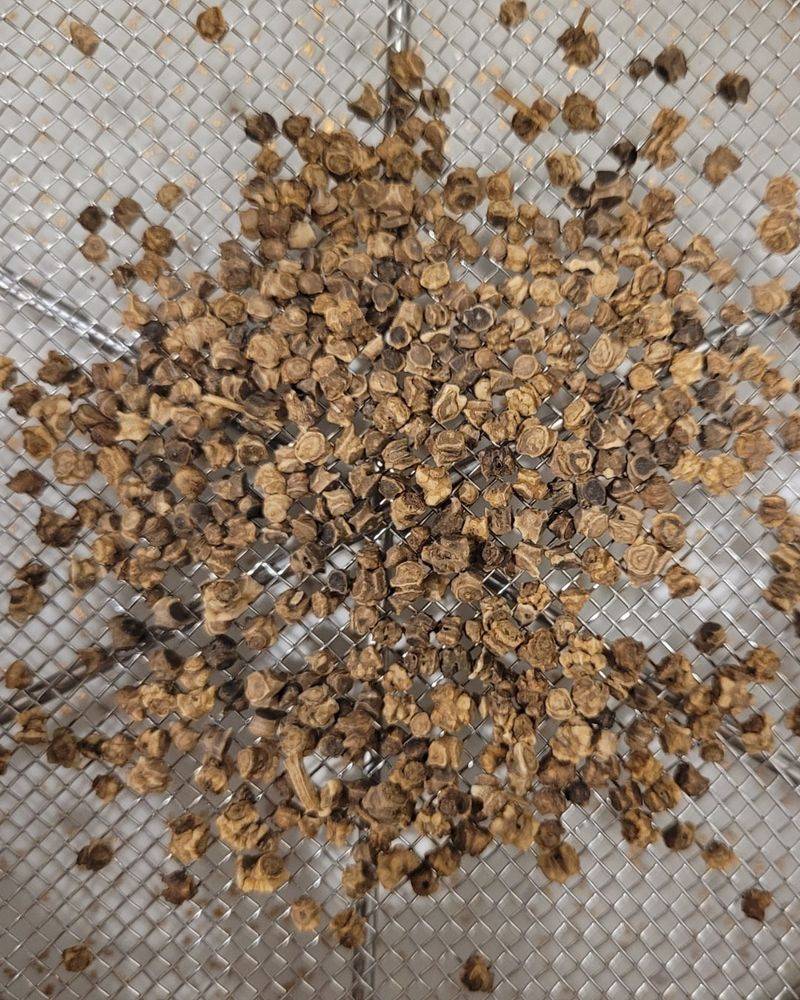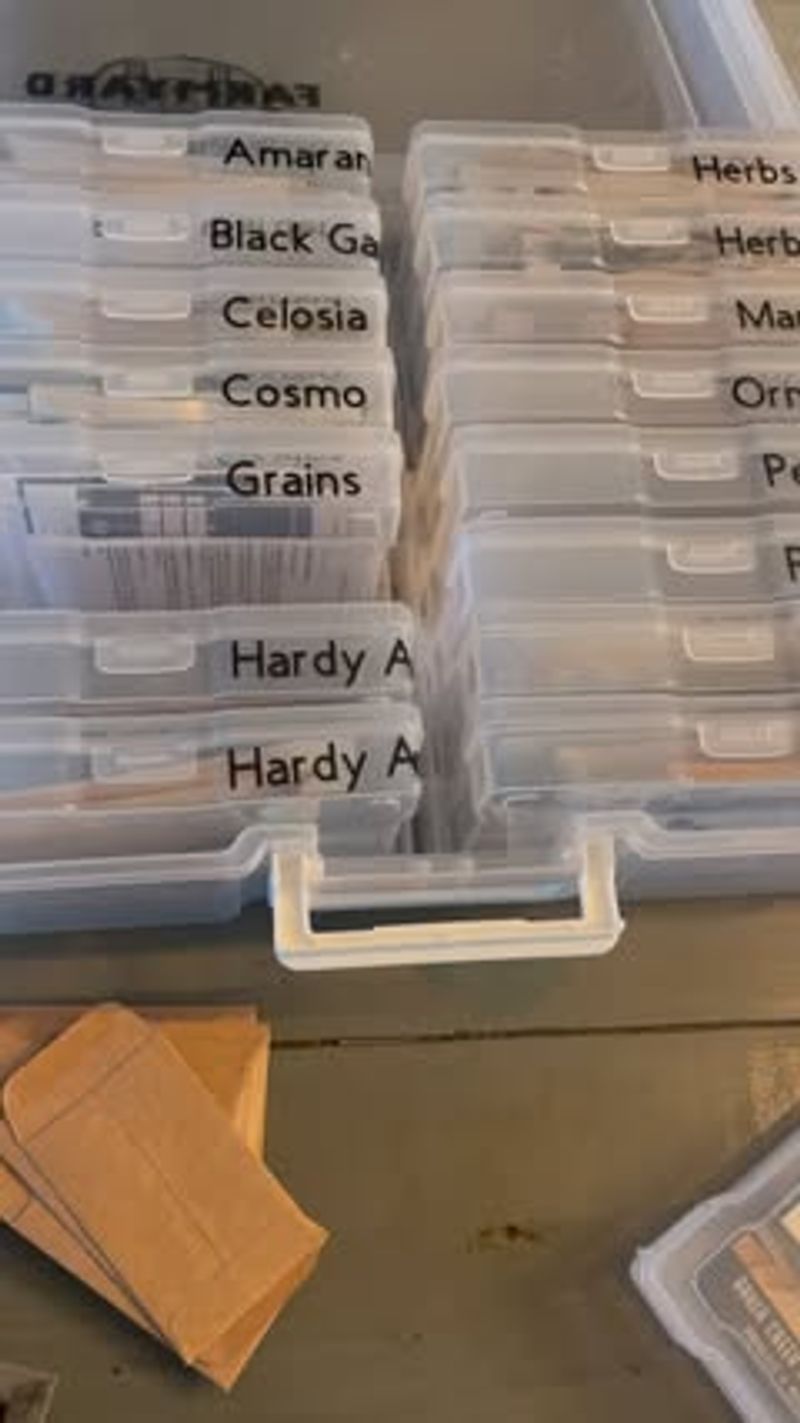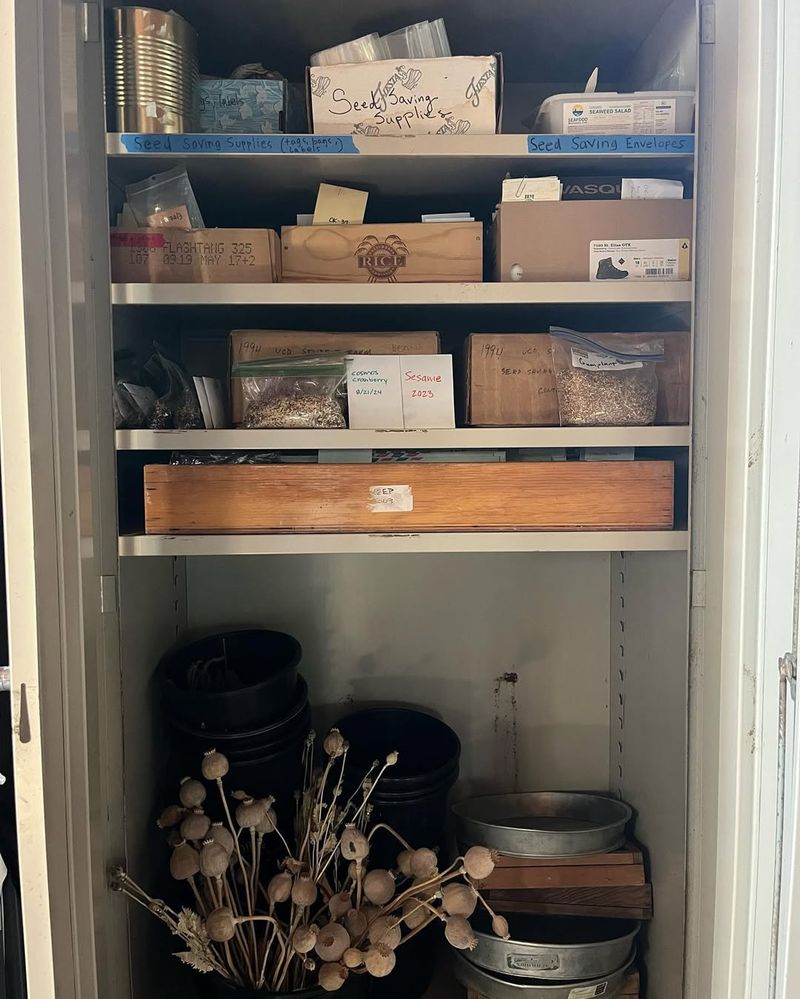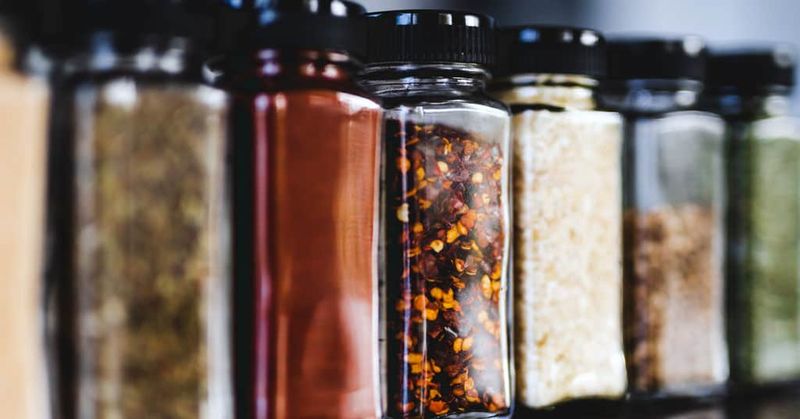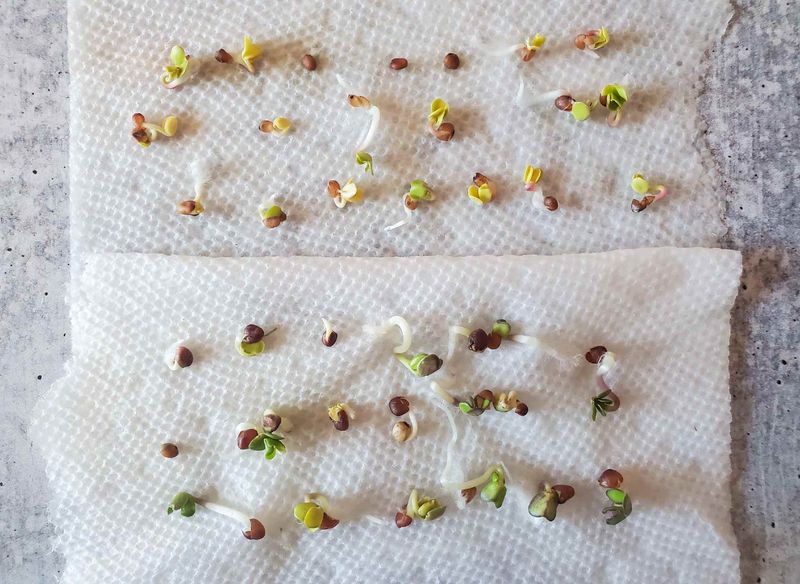Saving seeds from your garden is like keeping a piece of history alive for future seasons. Pennsylvania gardeners know that heirloom seeds carry special traits passed down through generations, making them worth preserving.
Learning the right way to collect and store these seeds means you can grow your favorite plants year after year without buying new packets.
1. Wait Until Seeds Are Fully Mature
Patience pays off when harvesting seeds from your plants. Many gardeners make the mistake of picking seeds too early, which leads to poor germination rates next spring.
Look for signs like dried seed pods, brown husks, or fruits that have passed their prime eating stage. Tomatoes should be overripe and soft, while bean pods need to rattle when shaken.
Pennsylvania’s shorter growing season means watching your calendar carefully so seeds mature before the first frost hits.
2. Clean and Dry Seeds Thoroughly
Moisture is the enemy of seed storage because it invites mold and bacteria. After collecting your seeds, spread them on paper towels or newspaper in a single layer.
Choose a warm, dry spot with good air circulation, away from direct sunlight. Most seeds need about one to two weeks to dry completely, though larger seeds may take longer.
Test dryness by bending a seed—if it snaps instead of bends, you’re ready for the next step in preservation.
3. Label Everything With Details
Your memory might seem sharp now, but come planting time next spring, you’ll struggle to identify unmarked seeds. Write down the plant variety, harvest date, and any special notes about the parent plant’s performance.
Use permanent markers or pencil since regular ink can smudge or fade over time. Include information about taste, disease resistance, or unusual characteristics that made you want to save these particular seeds.
Pennsylvania gardeners often note which plants handled summer humidity best.
4. Store In Cool, Dark, And Dry Conditions
Temperature swings and humidity destroy seed viability faster than age alone. Find a storage spot that stays consistently cool, ideally between 32 and 41 degrees Fahrenheit.
Basements in older Pennsylvania homes work perfectly if they stay dry, or use the back of your refrigerator. Keep seeds away from furnaces, water heaters, or anywhere moisture collects.
Darkness matters too—light exposure can trigger germination processes or break down seed coatings, reducing your success rate next season.
5. Use Airtight Containers With Desiccants
Glass jars with tight-fitting lids make excellent seed storage containers because they keep moisture out while letting you see what’s inside. Mason jars work beautifully and are budget-friendly options.
Add silica gel packets or powdered milk wrapped in tissue to absorb any remaining moisture. Replace these desiccants every few months to maintain effectiveness.
Avoid plastic bags for long-term storage since they can trap condensation, especially during Pennsylvania’s humid summers when temperature changes occur.
6. Test Germination Before Spring Planting
Nobody wants to waste precious garden space on seeds that won’t sprout. About a month before planting season, conduct a simple germination test using damp paper towels.
Place ten seeds between moist towels, seal them in a plastic bag, and keep warm for several days. Count how many sprout to calculate your germination percentage.
If fewer than half germinate, you’ll know to plant more thickly or source fresh seeds before Pennsylvania’s short growing season begins.

